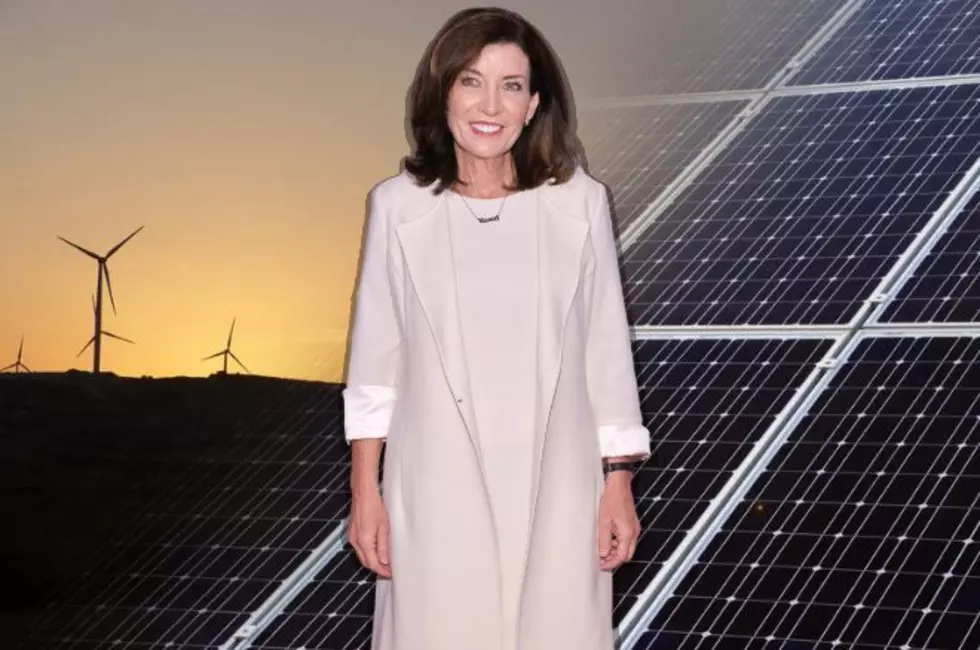
New York Governor Awards Millions for Clean Energy Education
By law, New York has less than ten years to more than double the share of electricity generated by wind, sun, and water from its current 30 percent to 70 percent and Governor Hochul is on a mission to make that happen.

Signed into law on July 18, 2019, New York’s Climate Leadership and Community Protection Act requires New York to “reduce economy-wide greenhouse gas emissions 40 percent by 2030 and no less than 85 percent by 2050 from 1990 levels.”
In an effort to move in this direction, New York Governor Kathy Hochul has announced that $52 million dollars will be awarded to 12 Regional Clean Energy Hubs in New York. These hubs will act as centers that focus on outreach, awareness, and education to foster residents' participation, especially those in disadvantaged communities.
READ MORE: NYS Passes Law Banning Future Sales of Gas-Powered Vehicles
In Central New, the Central New York Regional Planning and Development Board will receive $3,317,994. In the Finger Lakes, Climate Solutions Accelerator of the Genesee-Fingers Lakes Region will receive $3,835,014. And in the Southern Tier, Cornell Cooperative Extension of Tompkins County will receive $3,516,454.
Governor Hochul said, "As New York continues moving toward a green economy, community outreach and education is essential to ensuring all New Yorkers can participate in and benefit from this transition."
The New York State Energy Research and Development Authority partnered with community-based organizations and together they establish the Regional Clean Energy Hubs.
SEE ALSO: Buying Paint In New York Now Costs a Bit More Due to PaintCare Fee
Each of the Regional Clean Energy Hubs will be tasked with creating partnerships over the next four years to promote clean energy and offer educational services to residents in the communities within their region.
States with the most registered hunters
LOOK: Here's where people in every state are moving to most
LOOK: The most expensive weather and climate disasters in recent decades
More From 98.1 The Hawk









